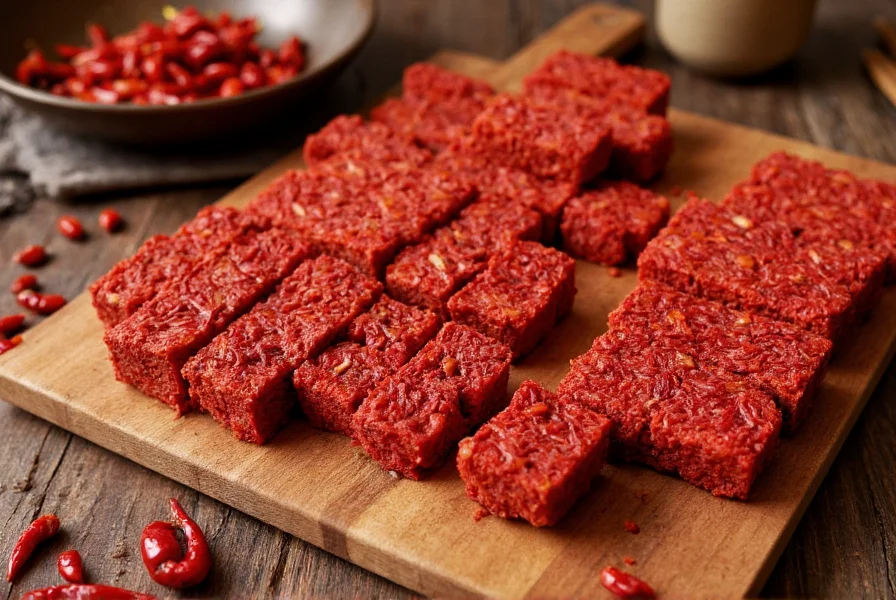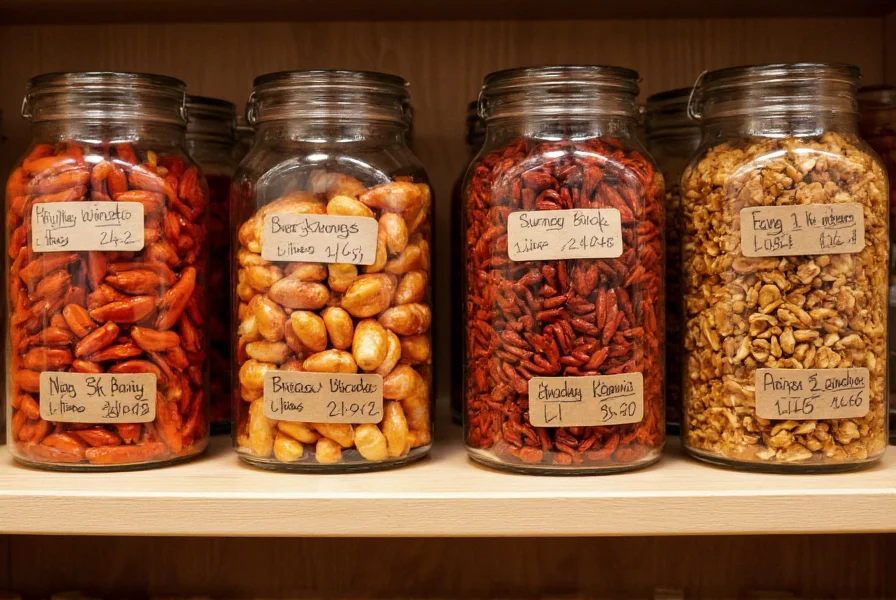These compacted chili formations preserve the full essence of dried chilies while offering practical storage benefits. Unlike chili flakes or powders that lose potency quickly, chili bricks maintain their aromatic compounds and capsaicin content for extended periods when stored properly.
What Exactly Are Chili Bricks?
Chili bricks consist of whole dried red chilies compressed into solid rectangular or square blocks, typically weighing between 100-500 grams. Manufacturers create them by tightly packing dried chilies—often facing variety or similar long red peppers—into molds under significant pressure. The natural oils and fibers in the chilies bind them together without additional binders.
The compression process serves multiple culinary purposes. It concentrates the chili's natural flavors while protecting them from oxygen exposure that degrades quality. When submerged in liquid during cooking, the brick slowly releases its complex flavor profile, creating a more nuanced heat than powdered alternatives.

Historical Context and Regional Variations
Originating in Sichuan province of China, chili bricks became popular during periods when storage space was limited. The compact form allowed households to preserve seasonal chili harvests efficiently. Traditional Chinese apothecaries also used compressed chili forms for medicinal preparations.
Regional variations exist across Asia:
| Region | Chili Variety Used | Distinctive Characteristics |
|---|---|---|
| Sichuan, China | Facing heaven chilies | Intense heat with floral notes, used in mapo tofu base |
| Sichuan, China | Facing heaven chilies | Intense heat with floral notes, used in mapo tofu base |
| Thailand | Bird's eye chilies | Extreme heat, used in curry pastes |
| Korea | Gochootgaru peppers | Moderate heat with deep red color, used in kimchi |
Practical Culinary Applications
Chefs incorporate chili bricks into dishes through several techniques:
- Simmering method: Place whole brick in broth or sauce to slowly release flavors
- Grating technique: Use fine grater to add controlled amounts to dishes
- Soaking approach: Rehydrate brick in warm water before chopping for even distribution
- Infusion process: Steep in oil to create chili-infused cooking medium
Professional kitchens often prefer chili bricks for consistent flavor delivery in high-volume cooking. The compressed form ensures each portion contains the same ratio of seeds, flesh, and veins—critical for maintaining recipe consistency across multiple batches.
Storage Guidelines for Maximum Freshness
Proper storage extends the shelf life of chili bricks significantly. Keep them in airtight containers away from light and moisture. Under optimal conditions:
- Room temperature: 6-8 months while maintaining peak flavor
- Refrigerated: 12-18 months with minimal quality loss
- Freezer storage: Up to 24 months when properly wrapped
Check for quality degradation by examining color (should remain deep red, not fading to brown) and aroma (should have sharp, clean chili scent without mustiness). Discard if any mold appears, though the dense structure of properly made bricks rarely develops surface mold.

Substitution Options When Unavailable
When authentic chili bricks aren't accessible, consider these alternatives for different culinary applications:
- For slow-cooked dishes: Use 2 tablespoons chili paste per 100g brick
- For immediate heat: Substitute 1 tablespoon crushed red pepper flakes
- For complex flavor: Combine 1 teaspoon smoked paprika with 2 teaspoons cayenne
- For traditional Chinese recipes: Use doubanjiang (fermented bean paste) as base
Remember that substitutes won't perfectly replicate the gradual flavor release of whole chili bricks. Adjust quantities based on your heat tolerance and the specific recipe requirements. Always add heat components gradually, as you can increase but not reduce spiciness once incorporated.
Traditional Recipes Featuring Chili Bricks
Certain regional specialties rely on chili bricks for authentic flavor profiles:
- Sichuan hot pot base: Simmer one small brick in broth for 20 minutes before adding ingredients
- Dry-fried green beans: Add grated chili brick during final stir-frying stage
- Chili oil preparation: Infuse oil with chili brick pieces for 48 hours
- Spicy wonton sauce: Dissolve small piece in vinegar and soy mixture
Home cooks can adapt these techniques to various cuisines. For example, adding a small piece of chili brick to tomato-based Italian sauces creates a subtle heat dimension that complements rather than overwhelms traditional flavors.
Frequently Asked Questions
Can I make chili bricks at home?
Yes, you can create homemade chili bricks by tightly packing dried chilies into a mold and applying significant pressure. Traditional methods use wooden presses, but modern cooks achieve similar results with heavy books or weights in airtight containers. The process requires completely dry chilies with minimal moisture content to bind properly.
How do I measure chili brick portions accurately?
For precise measurements, use a kitchen scale since density varies between brands. As a general guideline, 20 grams of chili brick equals approximately one tablespoon of chili flakes. When grating, collect the shavings on parchment paper before transferring to your dish for better control.
Are chili bricks gluten-free and suitable for special diets?
Pure chili bricks containing only dried chilies are naturally gluten-free, vegan, and paleo-friendly. Always check packaging for potential additives, especially in commercial products that might include preservatives or binding agents. Traditional artisanal versions typically contain only chilies with no additional ingredients.
What's the difference between chili bricks and chili pastes?
Chili bricks maintain the whole chili structure and release flavor gradually when simmered, while pastes provide immediate heat and flavor dispersion. Bricks offer more control over intensity since you can remove them from cooking liquid, whereas pastes integrate completely. Bricks also have longer shelf life without refrigeration compared to most pastes.
How can I reduce the heat level of dishes made with chili bricks?
To moderate heat, remove the chili brick from cooking liquid once desired spice level is reached. Adding dairy products like yogurt or coconut milk helps counteract capsaicin. Sugar or honey can balance heat perception, while acidic components like vinegar or citrus juice redirect taste receptors. For future batches, use smaller portions or choose milder chili varieties for your bricks.











 浙公网安备
33010002000092号
浙公网安备
33010002000092号 浙B2-20120091-4
浙B2-20120091-4